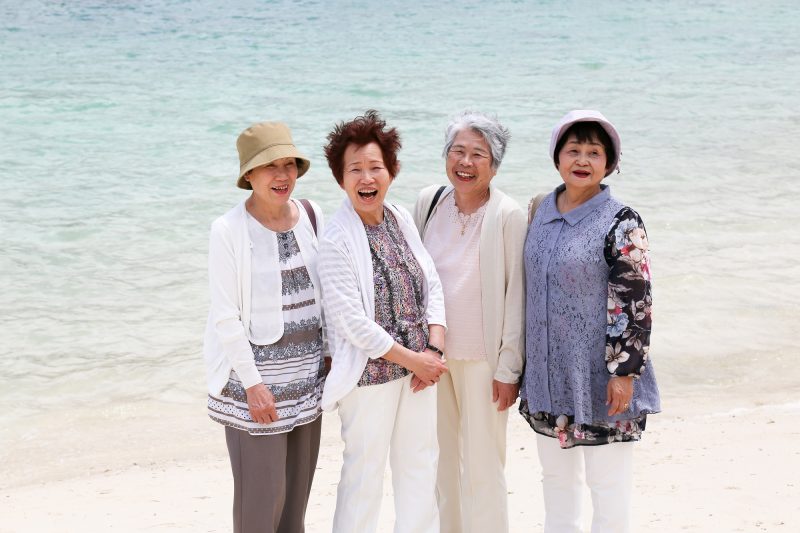Four hundred miles to the south of the Japanese mainland, the Okinawa prefecture is home to a population that is well known for longevity and has even been dubbed by some as “the land of immortals.”
Okinawans statistically have less cancer, heart disease and dementia than most countries. As a result, they live longer, so much so that the island has the highest number of centenarians per capita in the world and of them, two-thirds of them were still living independently at the age of 97 in a recent study.
The question of why is something researchers have spent a great deal of time answering and what they’ve found is a combination of factors involving diet, lifestyle and possessing a sense of purpose. While remaining social and active late in life is vital, for the purposes of this article, we’ll focus on the dietary aspects of Okinawan life and how they provide the foundation for longevity.
Hara Hachi Bu
Taught by Confucius, this saying translates to “eat until you are eight parts whole.” The operative idea here is not eating to the point that your stomach is at capacity. Instead, this ancient teaching suggests you stop eating when you feel 80% full.
This form of cultural calorie restriction is highly effective in maintaining the population’s body mass index and pairs well with the local diet. They eat significantly less and slower than other cultures, allowing their bodies to experience the sensation of fullness much sooner. As a result, the rates of obesity, diabetes, cancer and age-related disease are much lower in Okinawa than in the U.S.

The Okinawan Diet
Consuming a wide range of foods, the Okinawan diet isn’t based in restriction, but it is based in enjoying variety. According to Dr. Craig Wilcox, author of the book “The Okinawa Program,” Okinawans eat fish three times per week on average. The seafood comes from a variety of sources as they also eat a lot of squid and octopus which are rich in taurine – a fat processing amino acid that studies show lowers cholesterol and blood pressure.

The island’s indigenous vegetables help shape the diet as well. The purple sweet potatoes common in Okinawan meals are rich in vitamin E, flavonoids, carotenoids and lycopene. The “goya” plant, a type of bitter cucumber, has been shown to have a positive impact on blood sugar, making them a good source of food for diabetics.
The population also eats more tofu and konbu seaweed, a type of edible kelp. Add a healthy dose of whole grains, vegetables and soy products and what you have is a recipe for healthy aging. But the key is in the balance. According to Blue Zones, an organization dedicated to studying the habits of the people in parts of the world that have the most centenarians, Okinawan diets are heavily based on the aforementioned potatoes, rice, legumes and other vegetables, the four categories that make a combined 94% of the Okinawan diet.
This also creates a carbohydrate rich diet, as opposed to the protein heavy diets that are often touted as healthy despite their meat intake. The Okinawan ratio of carbs to protein is 10:1, which research from the Okinawa Centenarian Study (OCS) suggests is helpful in fighting age related illness. For example, the population has a low risk of arteriosclerosis and stomach, breast or prostate cancer.

The OCS began investigating the health of the island’s ageing population in 1975, studying inhabitants from across the Okinawa prefecture. In 2016, OCS had examined 1,000 centenarians from the region.


